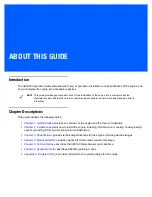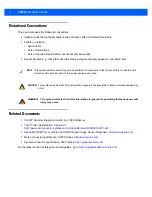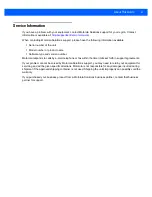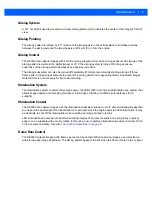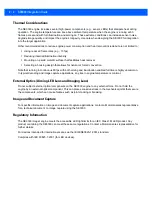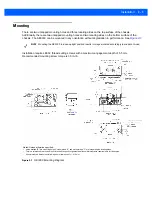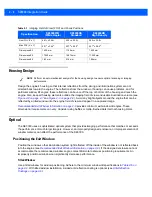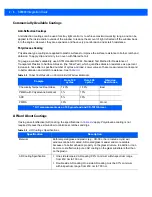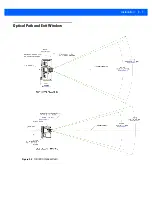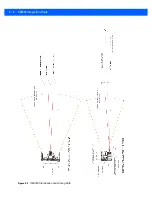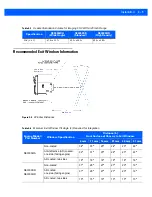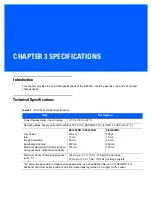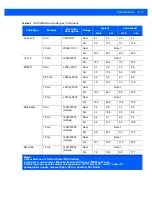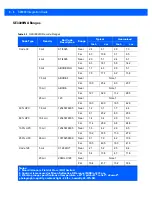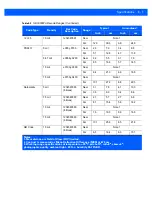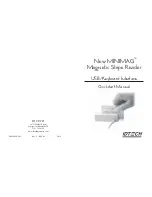
2 - 6
SE3300 Integration Guide
Commercially Available Coatings
Anti-Reflection Coatings
Anti-reflection coatings can be used for stray light control or to achieve maximum working range, and can be
applied to the inside and/or outside of the window to reduce the amount of light reflected off the window back
into the engine. However, they are expensive and have very poor abrasion and scratch resistance.
Polysiloxane Coating
Polysiloxane type coatings are applied to plastic surfaces to improve the surface resistance to both scratch and
abrasion. To apply, dip and air dry in an oven with filtered hot air.
To gauge a window's durability, use ASTM standard D1044, Standard Test Method for Resistance of
Transparent Plastics to Surface Abrasion (the Taber Test), which quantifies abrasion resistance as a percent
increase in haze after a specified number of cycles and load. Lower values of haze measurement correspond
to better abrasion and scratch resistance. See
A Word About Coatings
If using an anti-reflective (AR) coating, the specifications in
apply. Polysiloxane coating is not
required. Recess the exit window to minimize scratches and digs.
Table 2-3
Taber Test Results on Common Exit Window Materials
Sample
Haze 100
cycles
Haze 500
cycles
Abrasion
Resistance
Chemically Tempered Float Glass
1.20%
1.50%
Best
PMMA with Polysiloxane Hardcoat
3%
10%
ADC
5%
30%
PMMA
30%
Worst
* All measurements use a 100 gram load and CS-10F Abraser.
Table 2-4
AR Coatings Specifications
Specification
Description
Material
Both tempered glass and plastic (e.g., CR-39 or hard coated acrylic) exit
windows can be AR coated. AR coated glass is easier and more durable
because of a better adhesion property on the glass structure. In addition, it can
be more cost effective to put an AR coating on the glass substrate rather than
on the plastic.
AR Coating Specification
•
One side tempered AR coating: 92% minimum within spectrum range
from 450 nm to 700 nm.
•
Double side AR coating: One side AR coating must be 97% minimum
within spectrum range from 450 nm to 700 nm.
Summary of Contents for SE3300
Page 1: ...SE3300 INTEGRATION GUIDE ...
Page 2: ......
Page 3: ...SE3300 INTEGRATION GUIDE 72E 148589 01 Revision 8 September 2011 ...
Page 6: ...iv SE3300 Integration Guide ...
Page 10: ...viii SE3300 Integration Guide ...
Page 14: ...xii SE3300 Integration Guide ...
Page 18: ...1 4 SE3300 Integration Guide ...
Page 38: ...3 10 SE3300 Integration Guide ...
Page 44: ...4 6 SE3300 Integration Guide Figure 4 5 SE3300 to PL33XX Decoder 21 Pin Flex ...
Page 58: ...5 14 SE3300 Integration Guide ...
Page 68: ...6 10 SE3300 Integration Guide ...
Page 70: ...A 2 SE3300 Integration Guide ...
Page 72: ......
Page 73: ......


